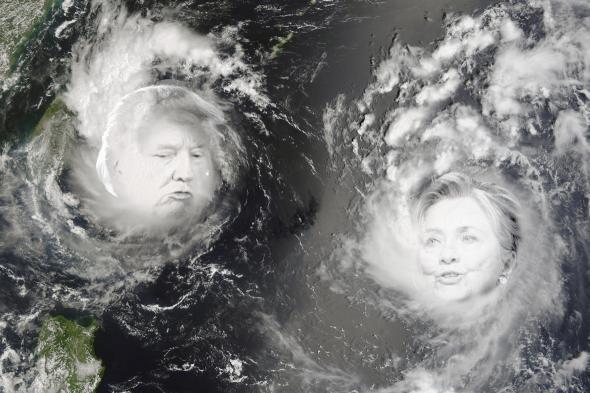Two tropical storms bubbled up on each coast on Tuesday—Tropical Storm Don weakened as it moved toward the Caribbean, whereas tropical depression 8-E picked up speed in the Pacific, according to USA Today. The tropical depression didn’t quite gain enough steam to become a full-on tropical storm deserving a (human) name, but the next one that does will be called Hilary.
Seriously, Don and Hilary? As impossible as it may seem to Americans, it’s really just coincidence that two storms with variations of last year’s presidential candidates’ names almost occurred at the same time. But hurricane names come from a set list established by the World Meteorological Organization, so the names would have been used this summer regardless of who ran in the election.
How are these names decided? In 1979 the WMO established the current naming system for storms, which employs six different sets of naming lists for the U.S., each list alternating between male and female names. Each set contains three lists of names, to cover three different areas of the country. Coincidentally, Hilary appears on the Eastern North Pacific list for the same batch of years that Don appears on the Atlantic list. (There is also another list for the Central North Pacific.)
The lists rotate through in the same order (meaning that this year’s list set will occur again in 2023). The names on the list are invariable, so if you are in the North Pacific, every sixth year the first named storm will be named, for example, Adrian. The rotating nature of the list means that hurricanes named Hilary have appeared most recently in 2005 and in 2011. There was also a tropical storm Don in 2011, though that year Don occurred at the end of July while Hilary happened in the end of September.
It’s not unheard of for the WMO to make changes to the lists, but it’s rare. If a hurricane is particularly destructive, that name is usually removed from the list out of respect and so that no confusion can occur in the future. (The last name removed from this year’s list in 2011 was Irene, which was replaced with Irma.)
Even though the storms did not end up spinning at the same time, and Hilary has not yet been named, Twitter users were still quick to jump on the coincidence.
